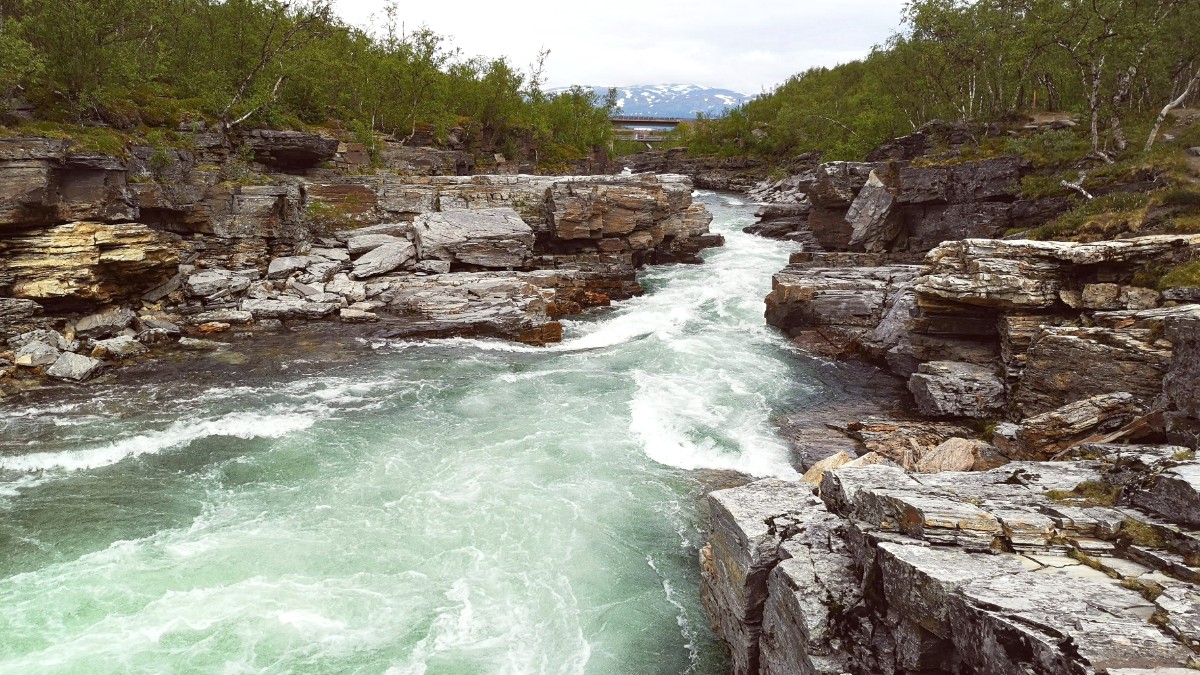
Norrland, Sweden
Abisko's remote location does not mean difficult access. An historic railway line transports visitors directly to the edge of its national park.
Abisko’s position in Norrbotten County situates it within Sweden's largest and northernmost county. The terrain transforms from vast forests to alpine tundra. The lake freezes over in winter, making a wide expanse for ice fishing. In summer, its waters reflect the Midnight Sun, offering peaceful views.
The Abisko River, or Abiskojåkka, flows from the mountains, through the park, and into Lake Torneträsk. The river's canyon, a famous feature, is accessible through marked trails. This canyon displays the area's geological history. Its dramatic cliffs and powerful waters are an impressive sight in both summer and winter. In winter, parts of the canyon freeze, creating unique ice formations.
Abisko National Park, founded in 1909, covers 77 square kilometers (30 square miles). This park preserves a subarctic ecosystem for scientific study and tourism. It features diverse terrain, including towering mountains, deep valleys, and the impressive Abisko River canyon.
The Abisko Scientific Research Station (Abisko Naturvetenskapliga Station) opened in 1903. It studies the subarctic environment, including climate, geology, flora, and fauna. Its long history of inquiry makes Abisko one of the most studied Arctic environments.
Abisko is a rich history with Sami culture, including traditional reindeer herding. The name "Abisko" stems from "Ábeskovvu," meaning "forest by the great water."
Established in 1909, Abisko National Park aimed for scientific preservation and tourism promotion.
The Malmbanan railway, completed in 1903, connected Kiruna to Narvik, opening Abisko to travel.
The Abisko Scientific Research Station opened in 1903, becoming a hub for subarctic environmental studies.
The Swedish Tourist Association (STF) established Abisko Turiststation in the early 20th century, developing Arctic tourism.
Abisko has an unique microclimate. It often experiences clearer skies than surrounding areas, a phenomenon sometimes called the "blue hole." This local weather pattern results from the surrounding mountains, which can push away clouds, presenting an advantage for aurora seekers.
Abisko's clear skies are ideal for seeing the aurora borealis. The "blue hole" effect expands visibility, making it a prime location for this natural light display.
In summer, Abisko experiences the Midnight Sun, where daylight lasts 24 hours. This period welcomes extended outdoor activities under constant natural light.
Abisko presents a concentrated experience of Arctic Sweden. This summary offers a quick look at its defining features.
Prepare for dramatic light, stunning views, and an opportunity to connect with an ancient landscape. This information supports planning every aspect of your visit, from arrival to departure.
Abisko offers a peaceful retreat into Sweden's northern wilderness. Its combination of natural beauty, scientific importance, and cultural depth makes it a noteworthy destination.
Abisko sits 250 km north of the Arctic Circle in Norrbotten County, Sweden. It features a subarctic climate with clear skies, ideal for aurora viewing.
Main attractions include the Northern Lights in winter, the Midnight Sun in summer, hiking trails like Kungsleden, and insights into Arctic nature and Sami culture.
The Arctic Circle railway makes Abisko highly accessible. The village has a very small population, with most residents connected to the park, research, or tourism.
Respect local Sami culture. Learn about their traditions and avoid disturbing reindeer, which often form part of Sami livelihoods.
This guide provides comprehensive details for your visit. It covers what to anticipate, how to ready yourself, and how to maximize your time in this northern Swedish haven.
Prepare for a journey where nature takes center stage. Abisko greets travelers with its dramatic mountains, deep lake waters, and clear skies.